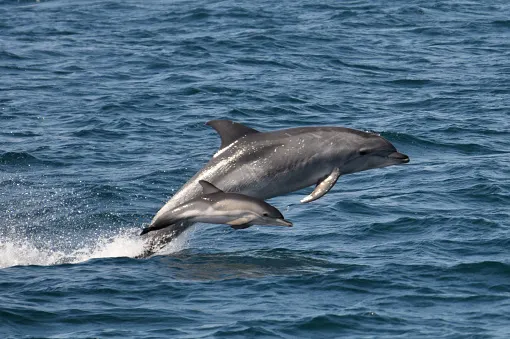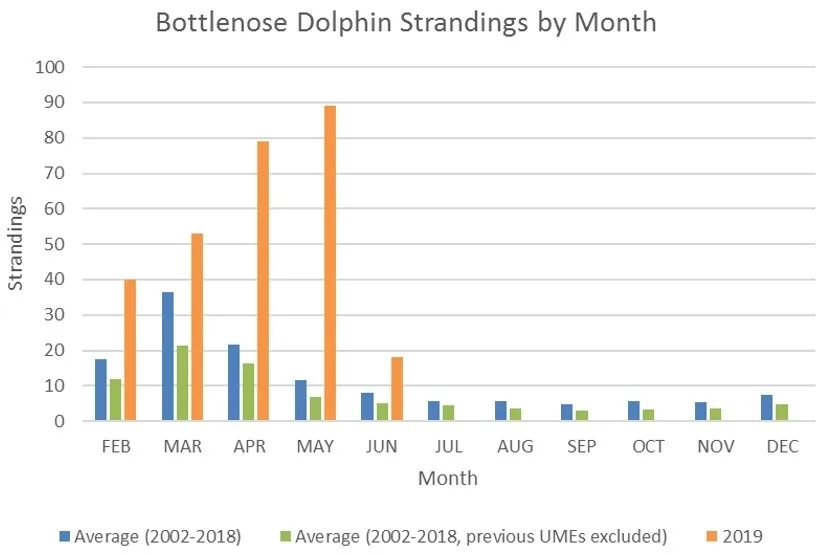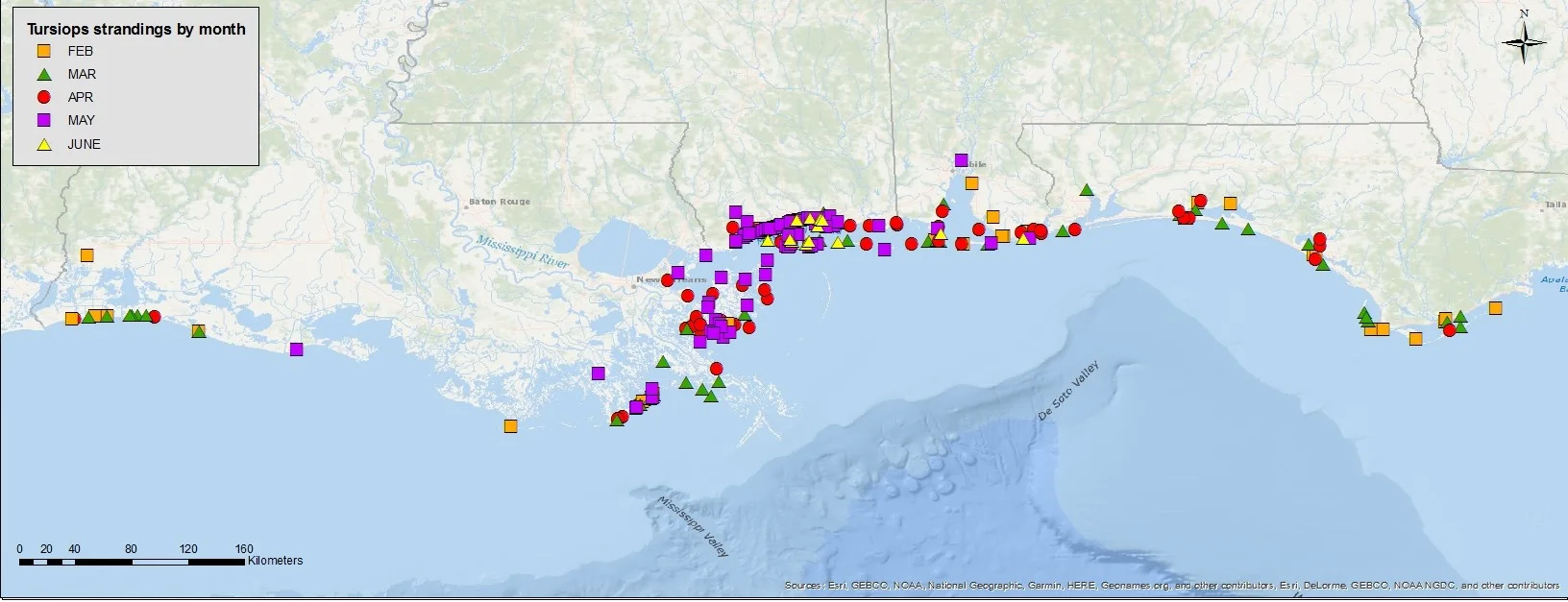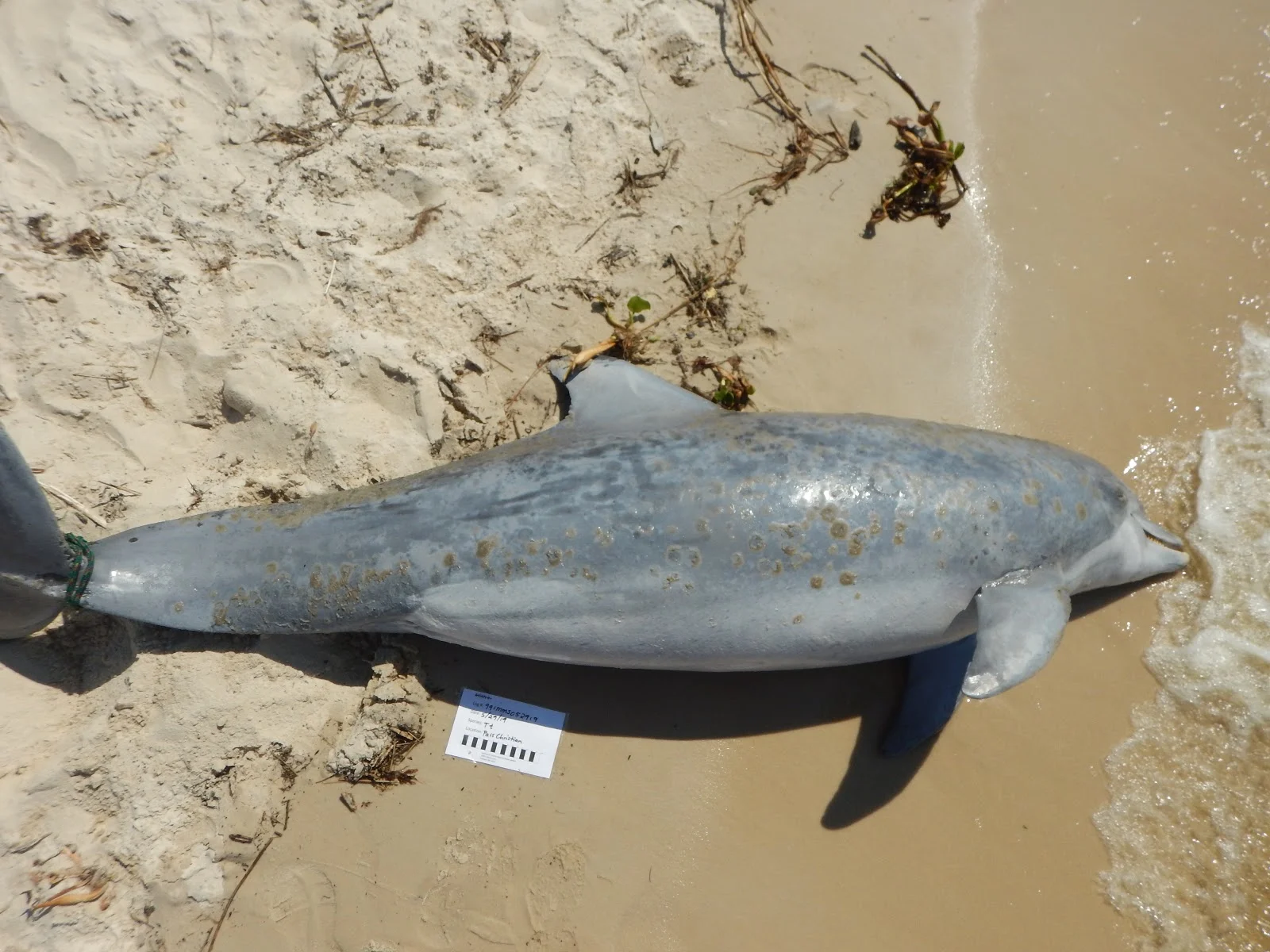
Dolphin deaths near 300 as Gulf of Mexico strandings triple
Nearly 300 bottlenose dolphins have been found stranded along the coast from Louisiana to the Florida Panhandle since the beginning of February, according to the U.S. National Oceanic and Atmospheric Administration (NOAA). That's about three times the historical average.
Roughly 98 per cent of the animals have died, NOAA scientists said in a statement released on Friday.
They've declared the wave of deaths an "unusual mortality event" -- an unexpected, significant die-off that demands an immediate response.

Comparison of 2019 monthly bottlenose dolphin strandings (orange) to the 17-year historical monthly average including previous UMEs (blue) and the historical monthly average excluding previous UMEs (green). Image courtesy NOAA.
While the cause of the die-off is under investigation an early suspect lies not in the Gulf, but inland.
RELATED: Canada to ban captivity of whales, dolphins
"We are seeing higher numbers [of stranded dolphins] in Mississippi and Louisiana and we are concerned about fresh water," Erin Fougères of NOAA's marine mammal stranding program told CNN. "It's an exceptionally wet winter for the entire United States and it's the wettest winter in the Mississippi Valley in the past 124 years."

2019 bottlenose dolphin stranding locations by month along the Northern Gulf of Mexico UME region. (Louisiana-Florida Panhandle). Image courtesy NOAA.
High rivers across the central U.S. have sent that excess fresh water rushing down the Mississippi River and into the Gulf, setting the stage for what experts believe will be a spring 'dead zone' nearly the size of Vancouver Island.
The dead zone is an annual phenomenon at the mouth of the Mississippi River, where fresh water, fertilizer, and sewage are swept into the Gulf by spring run-off. That cocktail proves deadly for marine life along the coast as fresh water sits atop the denser, salty ocean water and prevents oxygen from mixing down to lower levels. Any marine life that can't flee the area essentially suffocates.
SEE ALSO: Do sultry Gulf of Mexico waters mean trouble for hurricane season?
In the case of the bottlenose dolphin, experts think it may be the fresh water infusion itself that's to blame. Speaking to media, Fougères said some of the stranded dolphins have had fresh water skin lesions -- a condition found on bottlenose dolphins who have been exposed to water of lower salinity levels.

Dolphin with suspected freshwater lesions. Photo credit: Institute for Marine Mammal Studies/NOAA.
Another potential culprit is decidedly less fresh. Effects from the 2010 BP oil spill continue to linger for the Gulf's bottlenose population, causing blood and organ abnormalities in the animals along with reproductive issues.
According to the NOAA release, a team of scientists will be assembled to investigate the event and provide further guidance.
Sources: NOAA | CNN | National Geographic |










